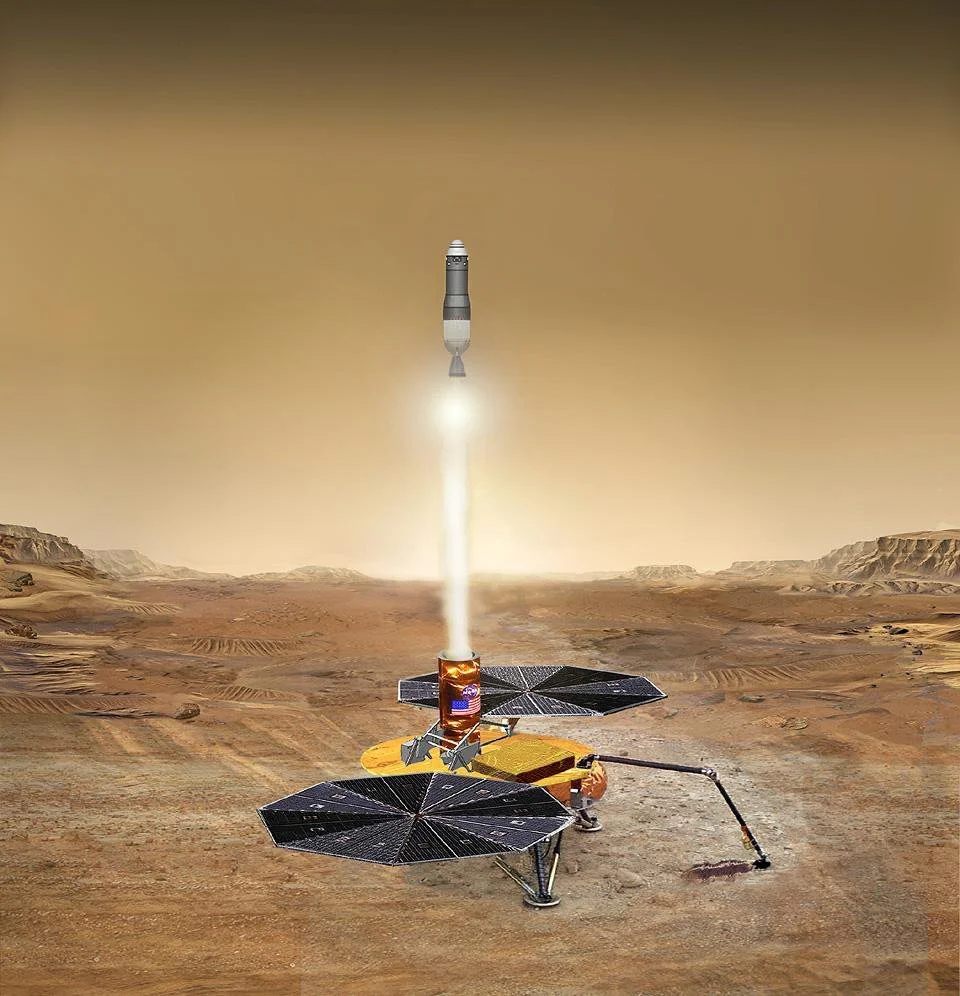What Will Mars Sample Return Do? “It's an Enormously Long List”
Bringing Mars rocks back to Earth will lead to unprecedented scientific opportunities.
by Andrew Moseman
As NASA’s Mars 2020 Perseverance rover explores the planet’s surface, it is creating a collection of the most interesting rocks it has come across. After scientists identify a specimen for collection, the rover drills cores of the rock directly into sample tubes. The future missions that make up the Mars Sample Return initiative would retrieve those tubes and bring them back to Earth for detailed study.
Sometime around 2030, Perseverance would rendezvous with an MSR lander and hand off the samples, which would then be launched on their journey to Earth. In January, Perseverance placed a subset of these samples on the ground just below the Jezero crater delta as a backup collection that could be collected should Perseverance become disabled.
Ken Farley, W. M. Keck Foundation Professor of Geochemistry, is the project scientist for Mars 2020. In a recent oral history with the Caltech Heritage Project, Farley explains why returning samples from Mars to Earth will open up unprecedented research opportunities. Many lunar samples retrieved by Apollo astronauts were studied in Caltech labs, revealing the story of the moon in great detail. Mars Sample Return could do the same for the Red Planet.
Q: I wonder if you could talk a little bit about just how important it is to get these samples back to Earth. In other words, what can't a laboratory roving around on Mars do what can be done here on Earth?
FARLEY: It's an enormously long list. This is why I agreed to be project scientist for this mission. My main interest is not in planetary science or in Mars per se, but it is in geochemistry and especially in the geochemical analysis of very small amounts of material. The history of samples being brought back from beyond Earth, especially with the lunar samples, it clearly motivates a lot of new thinking, a lot of new technique development, and a lot of really major discoveries. That, of course, occurred starting in the 1970s with the return of the lunar samples, but it continues to this day. The kinds of things that I am certain we can do when samples come back is to, for example, obtain radioactive decay-based dates for features on Mars. The key feature that we would love to date is when Mars’ climate went from being at least occasionally capable of sustaining flowing liquid water on the surface to the incredibly cold and arid state that the planet is in right now. We think that happened about 3.8 billion years ago or 3.5 billion years ago, but that has an uncertainty of about half a billion years.
When samples come back ... I suspect we will, in labs like those that exist at Caltech, be able to determine when important events like this happened to within an uncertainty of about 1 million years. That will be huge in creating a quantitative history. By quantitative, I mean something that has a quantitative X axis as time goes by. Right now, it's kind of just vague. That's going to be hugely important.
One of the central goals of the Mars 2020 mission is to look for evidence of life that might have existed on Mars when it had this liquid water at the surface, so when we think it was habitable. Today, it's too cold and too dry at the surface for any life as we know it, so it's not a great thing to be looking for. But in this distant time period from which we are collecting rocks, it looks like it was habitable. So, what is going to happen in the early 2030s is some scientist somewhere is literally going to be handed a rock and told, "You go look for life in this rock, but recognize that it will not likely be life as we know it." Nobody has ever done that before. That is a very unusual thing to do because we have not actually had samples that plausibly could have carried non-terrestrial life in them.

